Scottish Deerhound
The Scottish Deerhound is a dog breed that comes from the Sighthound family. They originated in Scotland and were primarily used for hunting Scottish Roe Deer. The deer was their main prey and they were twice as big as the Deerhound was.
These days, the Scottish Deerhound is mostly a family pet that likes various family activities, long walks, and a cozy pillow or bed to lay in.

Height:
28-32 in (71-81 cm)

Weight:
75-110 lb (34-50 kg)

Origin:
Great Britain

Life Expectancy:
8-11 years
Dog Breed Characteristics
This is a giant dog breed, one of the tallest in the world. The characteristics of the Scottish Deerhound are similar to those of a traditional Greyhound, only with rough, long hair, and slightly larger in the bone.
The Scottish Deerhound has an elongated skull that is more flat than round. Their eyes are large and usually dark brown or hazel in color. Their limbs are long as well as their tail that reaches nearly to the ground. Their coat is shaggy and should never have a woolly texture.
Grooming
Scottish Deerhound has a harsh and wiry coat that serves as protection during hunting on rough terrains. These dogs shed constantly throughout the year, and regular weekly brushing is required to keep the amount of hair under control and to keep the dog looking good
Scottish Deerhound coat colors:
- dark blue-gray
- dark and light grey or brindle
- yellow and sandy red
- yellow and red fawn
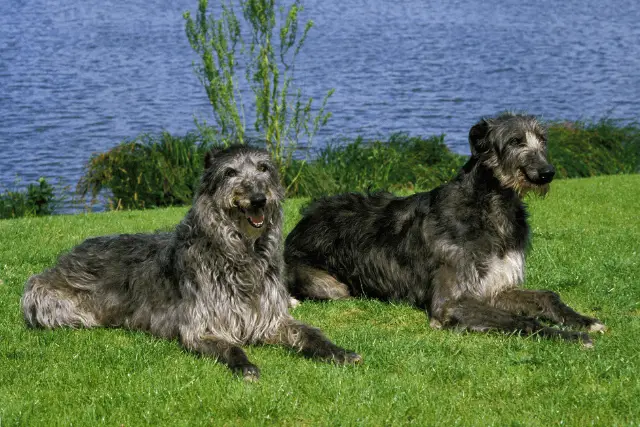
They will also need other basic care; brush their teeth at least three times a week. Check their ears for signs of infection and redness, bathe them when needed, and trim their nails if they don’t wear them down naturally.
Exercise
Scottish Deerhound dogs are medium active, and they will need a proper amount of daily activities to be happy. Playing with his owner in the house, chasing the ball, or just long walks can all do the trick and keep this dog satisfied.
If you provide him with enough daily activities, you don’t have to worry that your dog will miss behaving.
Scottish Deerhound temperament
The Scottish Deerhound is usually very calm and posed. They have been described as chivalrous and gentlemen-like. They are very brave when it comes to reacting in the face of danger but rarely show unprovoked aggression towards anyone.
As a family pet, the Scottish Deerhound is affectionate and full of love for their families. They are usually quiet and devoted but nevertheless alert and quick to react on the first signs of disturbance.
They can also be very energetic, so you will need to provide them with plenty of space and daily activities to keep them happy and satisfied. These dogs are not the best fit for apartments.
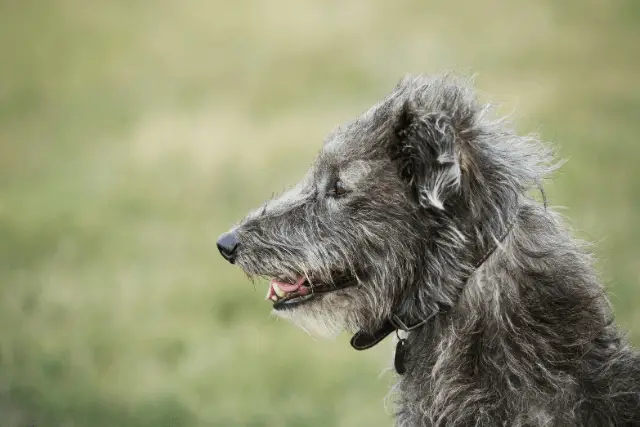
Training
The approach to Scottish Deerhound training should be cautious. They need a firm but fair trainer or handler that will never use harsh or cruel training methods on them. These aren’t the most intelligent dogs out there so training might require a bit more repetition.
Be fair, consistent, and firm, and you will notice that your dog is learning and moving forward with their training.
Scottish Deerhound socialization
Every dog breed in the world needs proper socialization; these dogs are no different. When you are thinking about socializing your Scottish Deerhound, keep in mind that they need to be socialized from the moment they arrive in your home.
Expose your new puppy to different sights, sounds, situations, dogs, and people. That way, you will ensure the best possible socialization for your Scottish Deerhound puppy. Only with proper, early socialization will you ensure that your puppy develops in a stable and well-behaved dog.
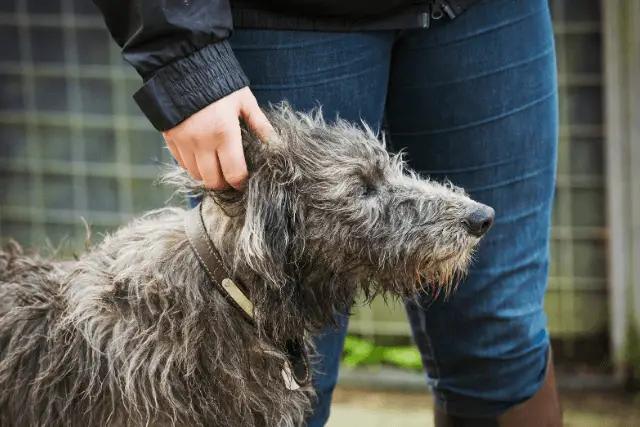
Health problems
The Scottish Deerhound is generally considered a healthy breed, but they are prone to some health issues and concerns like any other dog breed. These dogs have an average lifespan of 8-11 years.
When getting any breed, the breeder must show you the health tests that they have done for their breeding dogs. Dogs must be adequately tested because taking a chance and hoping that the puppy’s parents are healthy is a risk no one should ever take.
Only healthy dogs should be bred because that is the only way to ensure that bloodlines will remain healthy and without any problems. Health problems associated with this breed are;
- Hypothyroidism - A health problem caused by the hyperproduction of hormones from the thyroid gland.
- Allergies - these dogs are prone to have allergic reactions to specific foods, products, or medications.
- Gastric Torsion - Also known as bloat. A dangerous condition that causes the stomach to twist (torsion).
- Osteosarcoma
- cardiomyopathy
Breeders
When getting a dog, the most important thing is to get it from a responsible and reputable Scottish Deerhound breeder. Responsible breeders will breed dogs that don’t only look good but have great characters as well. You must find a good Scottish Deerhound breeder that can help you learn about this breed and make an informed choice about getting a dog with these characteristics.
Buying a dog from such a breeder will provide you with a healthy puppy who will not have health and temperament problems.
If you are unsure whether this is the breed for you, check out this FREE GUIDE that will help you decide which dog breed is right for you.
World Dog Finder team

Updated at31.08.2023.
Breed History
The exact Scottish Deerhound history will probably always remain a mystery and we might never know how this breed actually came to life. What we can be sure about is that these dogs can be traced back to the early 16th century when Scottish noblemen used them for hunting various large game.
The breed was extremely popular at that time, but there was a big problem regarding the ownership of the mighty Deerhound. These dogs were only allowed to be owned by noblemen. Noone below the title of Earl was allowed to have them so the population of these dogs was rather small in number.
In the late 19th century, the Scottish Deerhound was imported to the USA and they started slowly gaining popularity. This remains a rare breed even to this day.
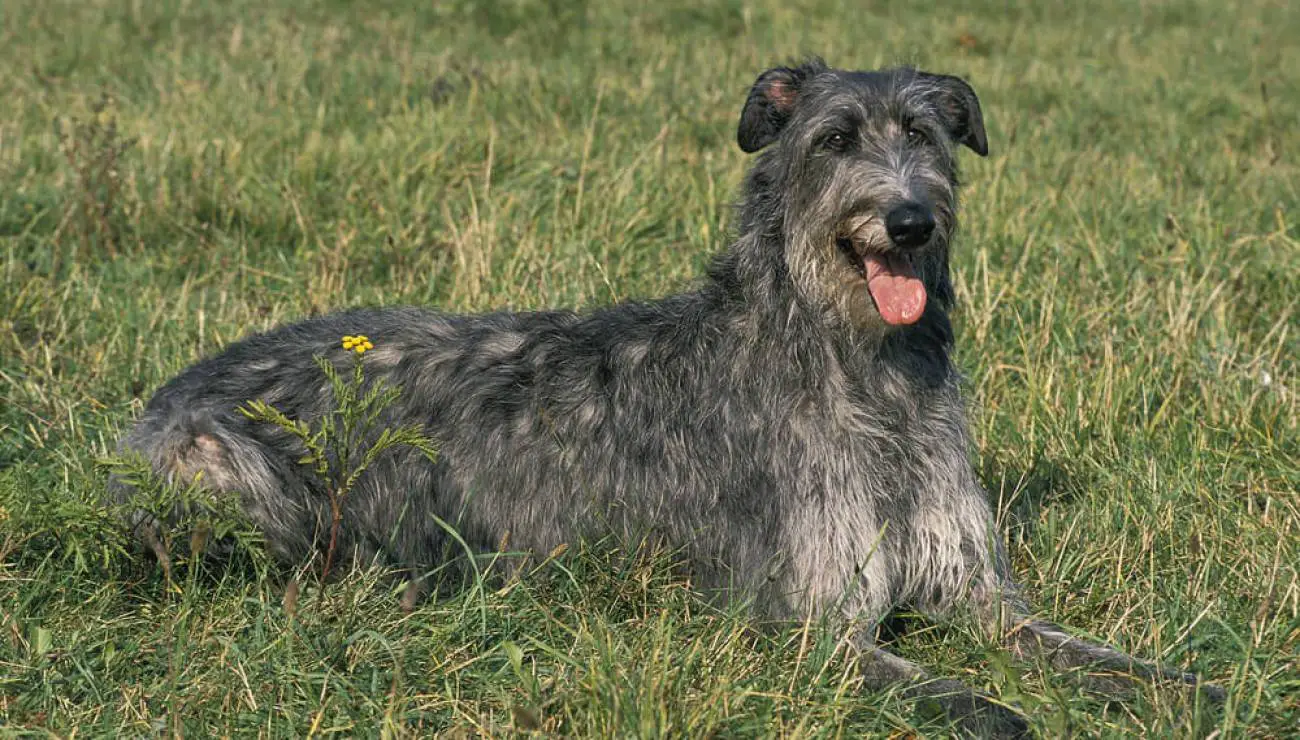
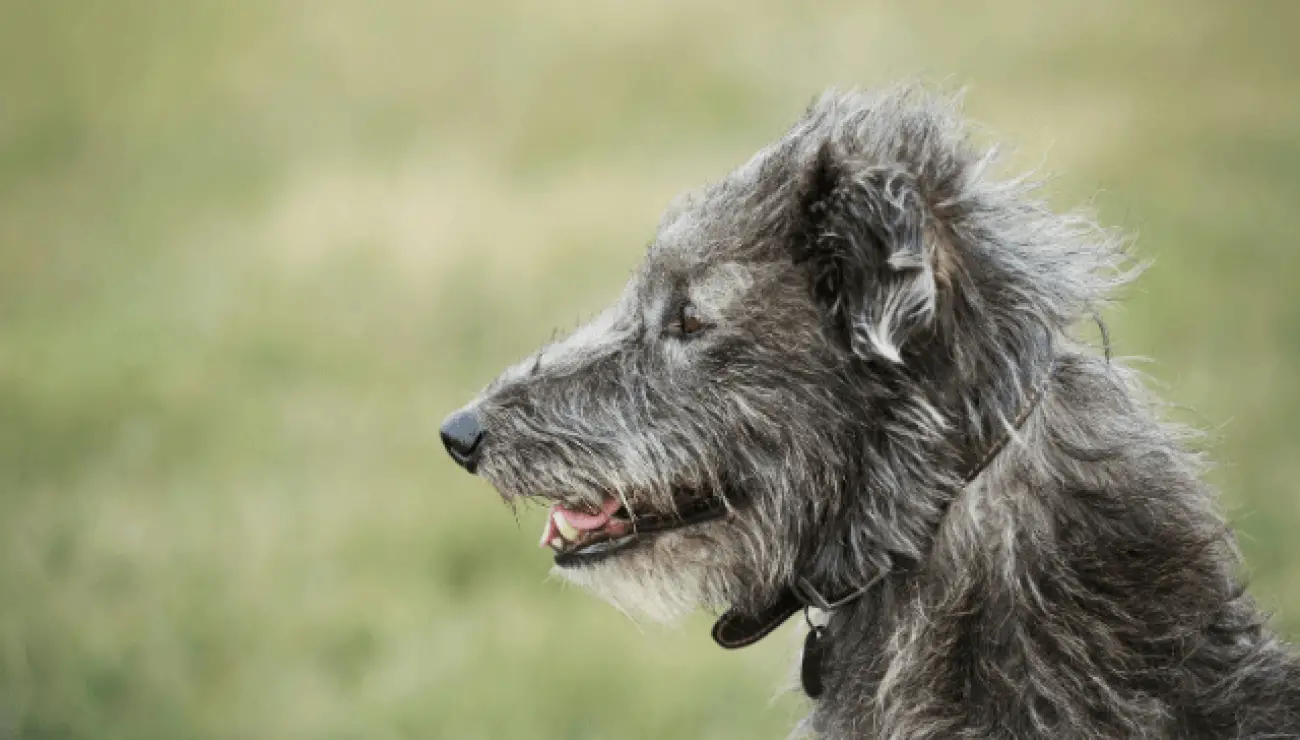
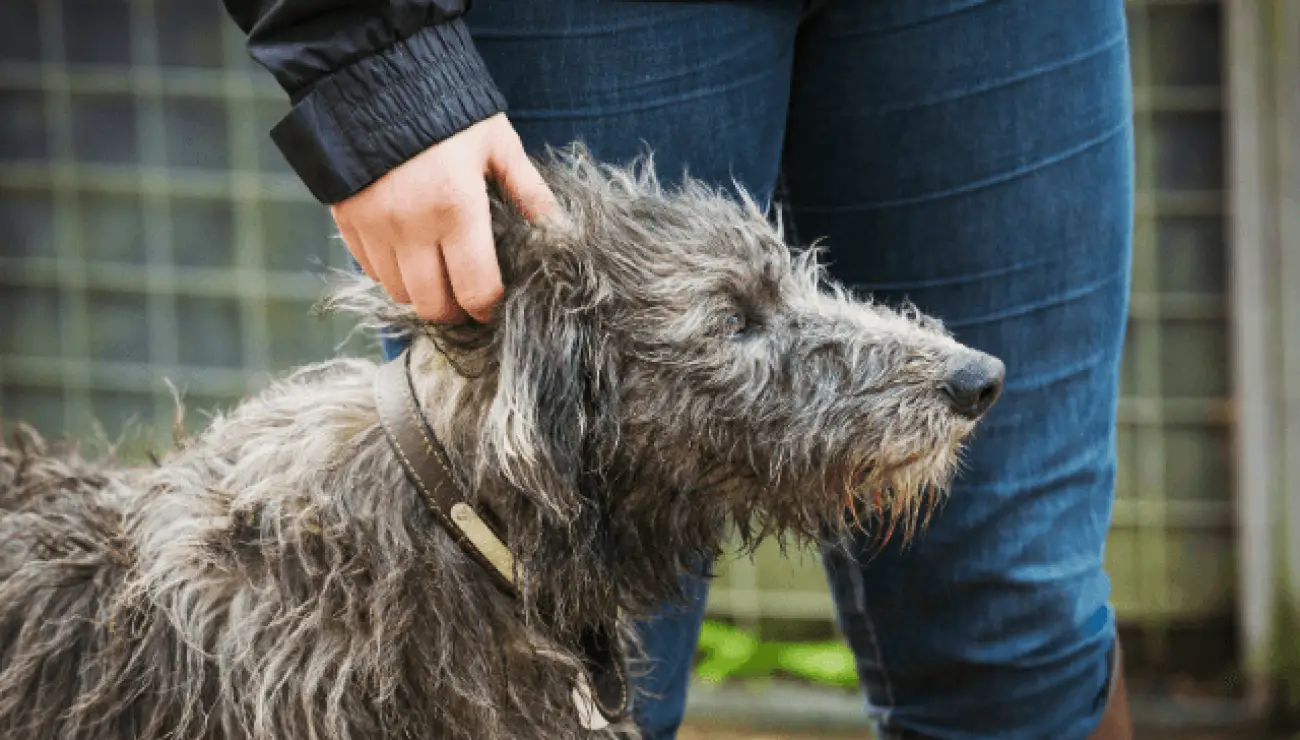
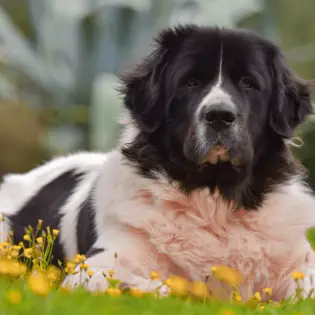
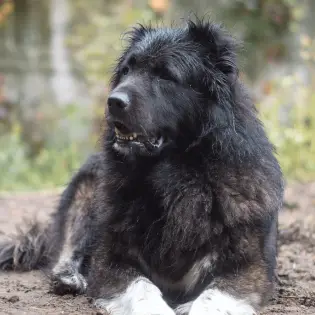
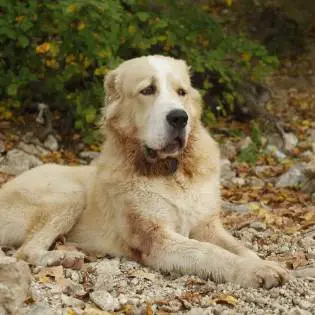
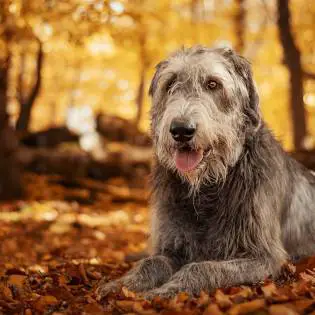
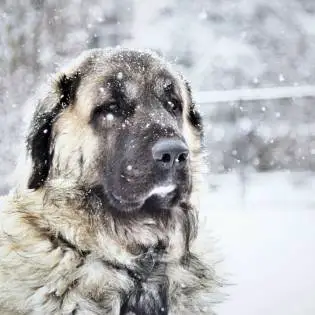
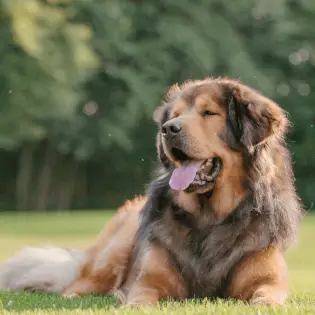
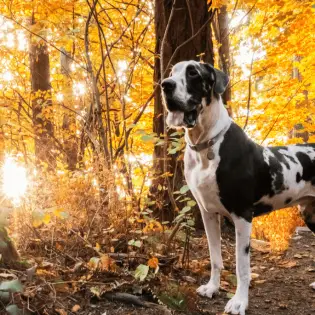
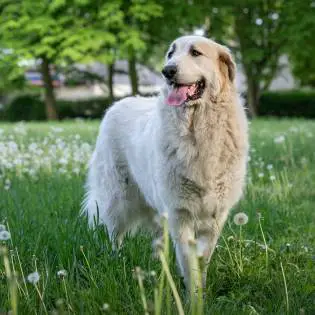
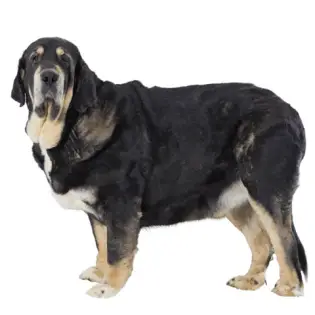


Share